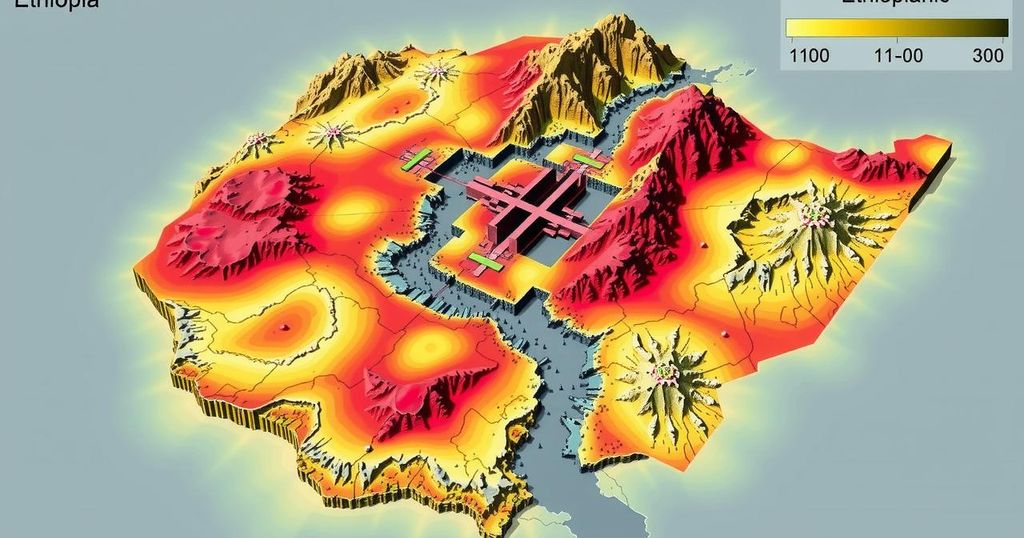World news
ABD, ABDELKARIM EL AMIN, AFAR, AFRICA, AID OPERATIONS, CLIMATE, CLIMATE CHANGE, DA, DABANGA, DABANGA – RADIO TV ONLINE, DISASTER MANAGEMENT, EGYPT, EL AMIN, EMERGENCY RESPONSE COORDINATION CENTRE, EUROPEAN CIVIL PROTECTION AND, EUROPEAN CIVIL PROTECTION AND HUMANITARIAN AID OPERATIONS –, FLOODING, GFZ, GFZ HELMHOLTZ CENTRE FOR GEOSCIENCES, GRAND ETHIOPIAN RENAISSANCE DAM, NATURAL DISASTERS, RADIO TV, SUDAN, US GEOLOGICAL SURVEY
Ethan Kim
0 Comments
Ethiopian Earthquakes: Sudanese Experts Reassure on GERD Safety Amid Seismic Activity
Recent earthquakes in Ethiopia’s Afar region have led to the evacuation of over 80,000 people. Sudanese geoscientists assure that these seismic events do not pose a threat to the Grand Ethiopian Renaissance Dam (GERD), noting that the tremors are over 500 kilometers away from the structure, which is designed to withstand seismic activity. They emphasize the need for collaboration among experts to address the GERD’s environmental impact and ensure water resource management in the Nile Basin.
In light of recent seismic activity in Ethiopia’s Afar region, which has led to the evacuation of over 80,000 residents, Sudanese geoscientists have sought to alleviate concerns regarding potential impacts on the Grand Ethiopian Renaissance Dam (GERD). They assert that the epicenter of the strongest recorded earthquake, which reached a magnitude of 8.1, is situated over 500 kilometers from the dam. Such geological distances provide reassurances that the design of the GERD takes into account seismic events, ensuring its integrity even amid significant tremors.
The latest earthquakes follow a series of quakes, including a magnitude 5.8 event and another measuring 5.5, all accompanied by numerous aftershocks throughout the past week. Authorities have been proactive, evacuating individuals from threatened areas, although detailed assessments of damage remain scarce. With some residents expressing concern about the dam’s safety relative to these quakes, experts emphasize that the seismic activity is geographically distant from the GERD.
In an interview with Dabanga – Radio TV Online, engineer Abdelkarim El Amin emphasized that the dam’s location was carefully chosen to be away from active seismic zones. “The area where the GERD is built is far from the earthquake zone in eastern Ethiopia,” he stated, further noting, “Dams are designed with a maximum capacity to withstand earthquakes.”
Despite ongoing scrutiny regarding the levels of water in the dam’s reservoir, which some fear may indicate leaks due to seismic activities, experts maintain that these fears are unfounded. El Amin pointed out that the structure of the GERD is robust and intended to endure such challenges. He added that although dam integrity is primarily an engineering issue, the GERD has significant implications for regional security involving water resources.
Should any natural disaster lead to a failure of the GERD, the potential consequences for Sudan and Egypt could be catastrophic. El Amin warned that a collapse would inundate vast agricultural lands and could affect existing infrastructure, including major dams in Sudan. He concluded by advocating for a collaborative approach among scholars and government entities to further explore the implications of the GERD, emphasizing the need for scientific understanding free from political agendas.
As seismic activity persists, the focus on the GERD’s impact on the Nile Basin highlights the intricate balance of regional water management and the necessity for ongoing dialogue among the involved nations.
The recent earthquake swarm in Ethiopia—particularly events measuring 8.1, 5.8, and 5.5—while alarming, appears not to pose a significant risk to the GERD, but highlights the need for preparedness and scholarly engagement on water resource management.
The Grand Ethiopian Renaissance Dam (GERD) is a significant infrastructure project in Ethiopia, aimed at enhancing energy generation and fostering economic growth in the region. However, its construction and operation have ignited complex regional dynamics, particularly with neighboring Sudan and Egypt, both of which rely heavily on the Nile’s waters. Seismic activity in the region has raised concerns about the safety and stability of the GERD, leading to heightened scrutiny and discussions among geoscientists and policymakers. With recent earthquakes impacting the northern regions of Ethiopia, Sudanese experts have reassured the public that the GERD is adequately designed for seismic resilience.
The reassurances from Sudanese geoscientists regarding the Grand Ethiopian Renaissance Dam’s structural integrity amidst recent seismic activity reflect a critical understanding of geological safety and engineering principles. While the earthquakes have prompted evacuations and concerns, evidence indicates that the GERD is positioned far from the epicenter of these quakes, thus significantly reducing the risk of disaster. El Amin’s insights advocate for a scientifically-informed dialogue among stakeholders to address the GERD’s environmental implications and uphold regional cooperation over water resource management.
Original Source: www.dabangasudan.org




Post Comment